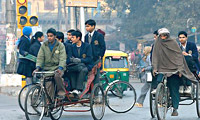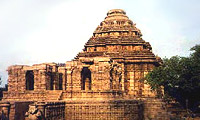|
The Capital City of India
New Delhi, the capital city of India, unwinds a splendor rich
with cultural heritage. The successive seat of power, Delhi
is adorned with powerful history, historical monuments, museums,
galleries, panoramic gardens and cultural shows. Comprising
into two distinct Delhi, the Old Delhi and the New Delhi,

The city is a travel hub of entire India. Narrating the city's
Mughal past, Old Delhi, takes you through the narrow lanes
of Chandani Chalk, passing through formidable mosques of Jama
Masjid, just opposite to it lies the famous monument of Red
fort. The imperial city of New Delhi highlights the monumental
structures of India Gate, President House representing the
colonial style of architecture. Besides its monumental heritage,
Delhi is also a shopper's paradise and has most exciting nightlife
in its disco-thecae, restaurants, and cinema halls.
History of Delhi
It's hard to think of Delhi as anything but the capital of
India but for a surprisingly long time Delhi was not the hot
seat of power. Having said that, however, it's also true that
Delhi was never exactly a sidekick on the scene of Indian
history. All through its long innings, the present capital
of India has been an important player. 
Reasons for this might be found in its geographical location.
Delhi has always been a convenient link between Central Asia,
the northwest frontiers and the rest of the country. An inscription
dating from the time of Asoka, the famous Mauryan king, tells
us that Delhi was on the great northern highway of the Mauryas
and linked their capital Patliputta (near modern Patna, Bihar)
with Taxila (Takshashila), now in Pakistan. This was apparently
the route that Buddhist monks took on their way to Taxila,
the intellectual hotbed in those days, and Central Asia. What
one can read between the lines is that it was also the route
that the Mauryan armies took enroute to quelling the frequent
rebellions and foreign insurgencies in Taxila and other such
border trouble spots. So, this gave Delhi considerable strategic
importance.
|



